Things were a little more spectacular, weren't they?
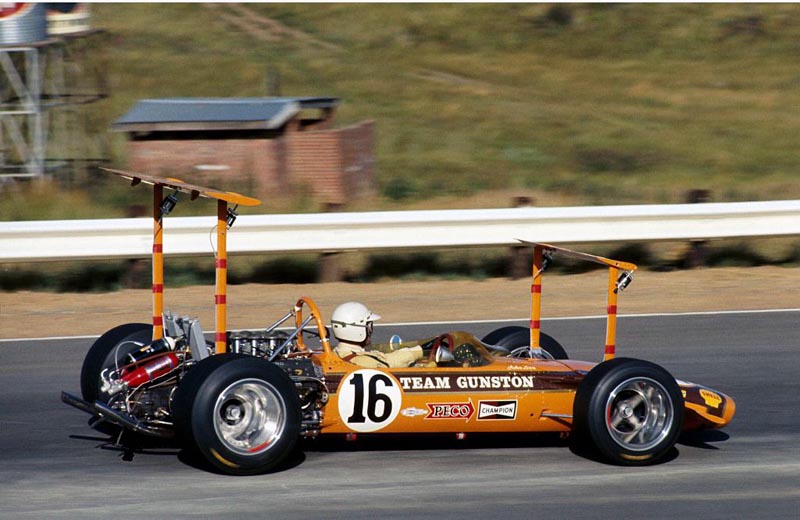

Posted 30 April 2015 - 23:00
Things were a little more spectacular, weren't they?

Advertisement
Posted 30 April 2015 - 23:46
Looks like he could set off the extinguisher for extra speed on the straights!
Posted 01 May 2015 - 01:14
TNF
Posted 01 May 2015 - 02:23
Posted 01 May 2015 - 04:04
Those rims... So shiny...
Edited by TF110, 01 May 2015 - 04:04.
Posted 01 May 2015 - 04:06
That's beautiful on so many levels...
Posted 01 May 2015 - 04:24
...from a great era in South African motorsport.. ![]()
Posted 01 May 2015 - 05:00
Can't unlearn things. ![]()
Posted 01 May 2015 - 05:07
Extinguisher or nitro?Looks like he could set off the extinguisher for extra speed on the straights!
Posted 01 May 2015 - 05:34
Aerodynamics had been well researched by this time, but transferring what worked on aircraft to a road car taught many some very hard lessons.
The inverted wings, placed up high to avoid the messy turbulence from the chassis and other stuff down low was logical, as was allowing the incidence to be changed. Presented at an angle to generate maximum downforce, but turned flat on the straights for top end speed. That is what DRS does these days.
Where it started to go south was mounting the wing struts directly to the wheel uprights, at first a logical assumption. The downforce from the wings went directly to the tires, allowing the chassis to be isolated from this effect. But those struts, so effective on aircraft were subject to the pounding from the wheels as they traveled over bumps and curbs. In hindsight, it is too easy to see how they could fail, and some did, tragically. That is why we now see current wings mounted very firmly to the chassis, the lone exception those little winglets on the wheel hubs. But if they broke off, the loss of downforce would be a small fraction compared to the complete failure of a wing.
It didn't take long before those struts and wings mounted to the wheel uprights were history.


Posted 01 May 2015 - 09:04
There were many interesting nose-jobs in the 70s, so much fun the designers must have had!
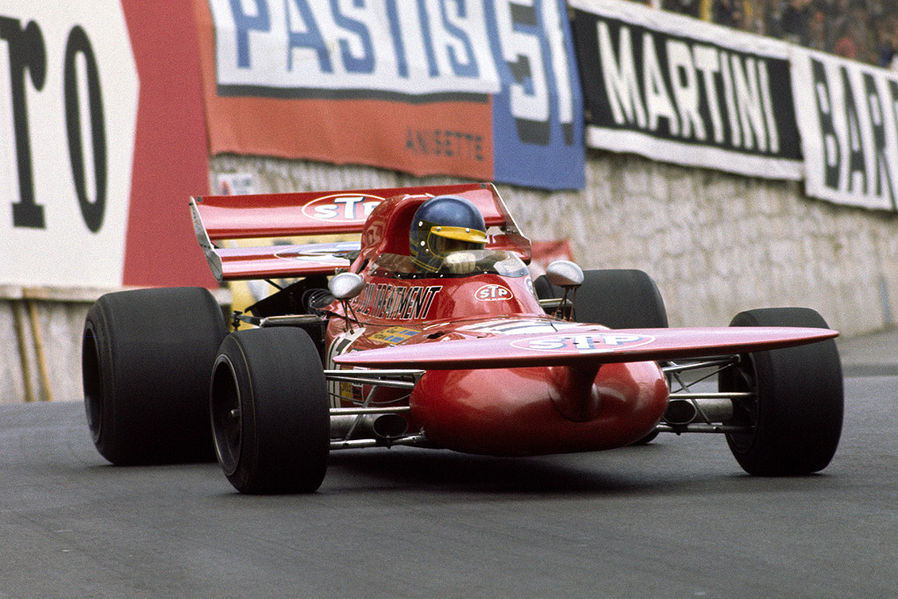

Posted 01 May 2015 - 09:06
Thanks for bringing up F1's ugliest era.
Posted 01 May 2015 - 09:11
Rolf Stommelen in the 1972 Eifelland-March

Jochen Mass in the 1979 Arrows A2

Posted 01 May 2015 - 09:28
Aerodynamics had been well researched by this time, but transferring what worked on aircraft to a road car taught many some very hard lessons.
The inverted wings, placed up high to avoid the messy turbulence from the chassis and other stuff down low was logical, as was allowing the incidence to be changed. Presented at an angle to generate maximum downforce, but turned flat on the straights for top end speed. That is what DRS does these days.
Where it started to go south was mounting the wing struts directly to the wheel uprights, at first a logical assumption. The downforce from the wings went directly to the tires, allowing the chassis to be isolated from this effect. But those struts, so effective on aircraft were subject to the pounding from the wheels as they traveled over bumps and curbs. In hindsight, it is too easy to see how they could fail, and some did, tragically. That is why we now see current wings mounted very firmly to the chassis, the lone exception those little winglets on the wheel hubs. But if they broke off, the loss of downforce would be a small fraction compared to the complete failure of a wing.
It didn't take long before those struts and wings mounted to the wheel uprights were history.
Exactly the reply I had lined up.
The desired strategy of the early attempts was actually the 'ideal' condition for aero:
1) Reduced affects from the body/chassis components
2) No loss of downforce in the suspension systems
3) Adjustable AoA for drag reduction
But the materials couldn't handle it. I'm sure you could engineer your way around the problem now but given the lessons learned, not worth it.
Posted 01 May 2015 - 09:38


Edited by Baddoer, 01 May 2015 - 09:38.
Posted 01 May 2015 - 09:42
Exactly the reply I had lined up.
The desired strategy of the early attempts was actually the 'ideal' condition for aero:
1) Reduced affects from the body/chassis components
2) No loss of downforce in the suspension systems
3) Adjustable AoA for drag reduction
But the materials couldn't handle it. I'm sure you could engineer your way around the problem now but given the lessons learned, not worth it.
Eeeh, the primary reason for the struts were to get out of the turbulence, while their disappearance is simple to explain; FIA/FISA introduced a maximum height for the wings.
Chapman's response was the jalousie wing on the Lotus 72, which everybody copied, but most designers were happy with two sections.
Open;

Closed;

Posted 01 May 2015 - 10:04
Eeeh, the primary reason for the struts were to get out of the turbulence, while their disappearance is simple to explain; FIA/FISA introduced a maximum height for the wings.
Chapman's response was the jalousie wing on the Lotus 72, which everybody copied, but most designers were happy with two sections.
Open;
Closed;
They introduced two points:
1) Max height for bodywork
2) All bodywork must be fixed to the sprung mass of the car
This removed the issue of breaking struts and dead drivers.
Posted 01 May 2015 - 10:06
Thanks for bringing up F1's ugliest era.
I'd prefer to see these cars than today's monstrosities ![]() ....at least you could tell whose was whose. Granted some were ugly but most weren't....
....at least you could tell whose was whose. Granted some were ugly but most weren't....
That Tyrrell remains one of my all-time favourites...
Posted 01 May 2015 - 12:22
They introduced two points:
1) Max height for bodywork
2) All bodywork must be fixed to the sprung mass of the car
This removed the issue of breaking struts and dead drivers.
No argument that the wing struts mounted to suspension bits were a bad idea from the start, but as far as I am aware these never actually lead to a fatality in F1. Yes, Hill and Rindt suffered accidents that could easily have been fatal at the '69 Spanish GP because of identical failures, but they both survived and the mounts were banned shortly thereafter (between qualifying and the race at Monaco that year, if I recall). There were unfortunately plenty of other issues with the cars of the era that led to fatalities ![]()
Posted 01 May 2015 - 13:55
Oddly enough, this car probably had very good aerodynamics compared to the rest of the field at the time, due to Ligier's links with Matra (and Matra's wind tunnels).
Posted 01 May 2015 - 13:56
No argument that the wing struts mounted to suspension bits were a bad idea from the start, but as far as I am aware these never actually lead to a fatality in F1. Yes, Hill and Rindt suffered accidents that could easily have been fatal at the '69 Spanish GP because of identical failures, but they both survived and the mounts were banned shortly thereafter (between qualifying and the race at Monaco that year, if I recall). There were unfortunately plenty of other issues with the cars of the era that led to fatalities
Jackie Oliver 'thought' the suspension mounted high wing had led to his own death and his arrival at the gates of heaven at Rouen in '68.
Posted 01 May 2015 - 14:27
It was an interesting age of experimentation. What started in 1967 with the basic cigar of a chassis, radiator mounted on the nose and exposed engine was the starting point, with a lot of diverse concepts being tried before our eyes. Some were abject failures for different reasons, but some concepts now form the foundation for today's Formula One cars. Radiators mounted beside the driver, air intake above the driver's head, two primary wings, on the nose and rear end, still the basic architecture of today's cars.
Air brakes.
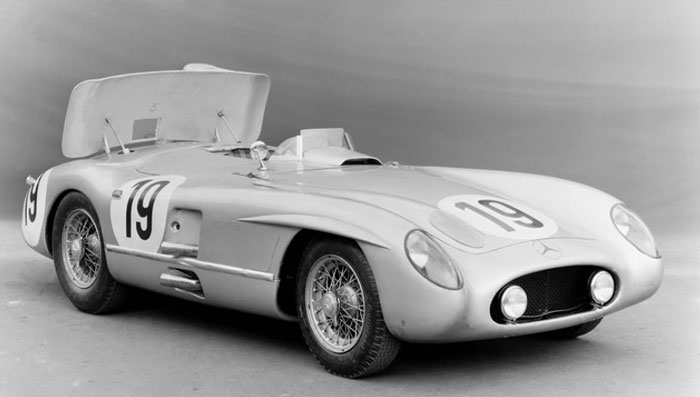
.jpg)
Posted 01 May 2015 - 14:51

Posted 01 May 2015 - 15:25
Even then I wondered what Derek Gardner was thinking;

Posted 01 May 2015 - 16:41
Cannot exactly explain it, but for some reason that airbox design reminds me of H.R.Giger's "biomechanoid" pictures :-)
("Space Jockey" etc.)
Edited by 30ft penguin, 01 May 2015 - 16:44.
Posted 01 May 2015 - 16:56
The OP reminds me a little of this:

Science isn't always beautiful ![]()
Posted 01 May 2015 - 18:00
Even then I wondered what Derek Gardner was thinking;
Wow I have never seen that Benetton before. What an interesting rear wing. I absolutely love these kind of threads. What is the model number?
Posted 01 May 2015 - 18:04
Tyrrell 012 and it was designed by Maurice Phillipe
http://en.m.wikipedi...iki/Tyrrell_012
http://www.conceptca...yrrell-012.aspx
Posted 01 May 2015 - 18:13
I'll bet that V shaped wing packed a lot of downforce at the tail.. maybe too turbulent to be efficient...Even then I wondered what Derek Gardner was thinking;
Posted 01 May 2015 - 18:30
^ Larger surface on that angled wing
Posted 01 May 2015 - 18:34
http://www.f1technic....php?f=6&t=8589
And more on the smaller wing behind and below the boomerang
http://www.conceptca...yrrell-012.aspx
Posted 01 May 2015 - 18:37
Even then I wondered what Derek Gardner was thinking;
I have heard about that car that this wing design was primarily to attract attention first and perhaps additional sponsorship as a result of that attention. Sounds plausible if you ask me but if actually true?
Henri
Posted 01 May 2015 - 19:11
Exactly the reply I had lined up.
The desired strategy of the early attempts was actually the 'ideal' condition for aero:
1) Reduced affects from the body/chassis components
2) No loss of downforce in the suspension systems
3) Adjustable AoA for drag reduction
But the materials couldn't handle it. I'm sure you could engineer your way around the problem now but given the lessons learned, not worth it.
My thoughts exactly!
Posted 01 May 2015 - 19:31
Before aerodynamics was a sience F1 did not exist.
Posted 01 May 2015 - 19:40
No argument that the wing struts mounted to suspension bits were a bad idea from the start, but as far as I am aware these never actually lead to a fatality in F1. Yes, Hill and Rindt suffered accidents that could easily have been fatal at the '69 Spanish GP because of identical failures, but they both survived and the mounts were banned shortly thereafter (between qualifying and the race at Monaco that year, if I recall). There were unfortunately plenty of other issues with the cars of the era that led to fatalities
I disagree with the bolded. That's the most logical and efficient place to attach them. Putting the downforce through the body and springs to get to the tires introduces a lot of other inefficiencies and problems. Attaching to the uprights does have issues with bumps, independent movement of the suspension, etc, but I think those are solvable problems. I bet if the rules didn't forbid it, wings would be attached directly to the uprights today (assuming flat-bottomed cars and ignoring ground effects and diffusers, obviously).
Posted 01 May 2015 - 19:57
Bad idea in the sense that they were poorly designed and implemented, with little testing done on fatigue due to normal suspension movements during the course of a race. I'm no engineer, but you can just look at the spindly mounts with single bolts attaching them to the rear suspension and imagine how little it'd take to shear them off or buckle them under load. In the conceptual sense of where downforce is best applied, yes, they're a great idea badly applied.
Edit: Check this out starting at 7:57, you can see the Lotus mechanics attaching one of the high wings with a single bolt-
https://youtu.be/4FnyurCfTsQ?t=7m57s
Edited by Dan333SP, 01 May 2015 - 20:03.
Posted 01 May 2015 - 20:16

Edited by YoungGun, 01 May 2015 - 20:17.
Posted 01 May 2015 - 20:18
High speed cheese grater!
Advertisement
Posted 01 May 2015 - 20:20
I thought it was a step ladder for getting into the cockpit. ![]()
Posted 01 May 2015 - 20:34
Jim Hall's Chaparral 2E featured a high, movable, suspension-mounted wing nearly two years before F1 - and it was better engineered
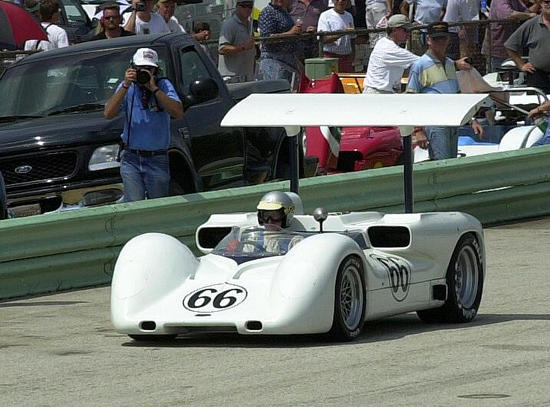
Similarly, the Chaparral 2E used sliding skirts and fans in 1970 - a good 8 years before the Brabham BT46B
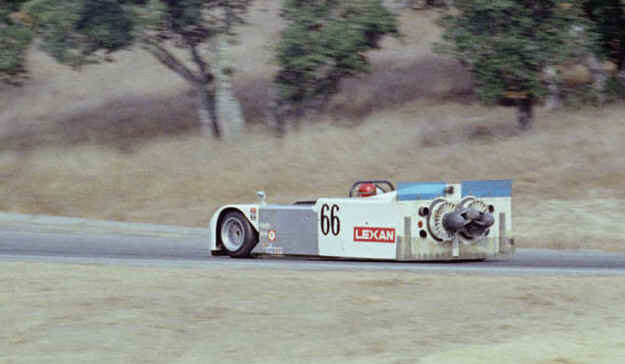
and Smokey Yunick beat even Jim Hall, running a high, fixed wing on his Dick Rathmann driven roadster during practice for the 1962 Indy 500

Edited by Amphicar, 01 May 2015 - 20:57.
Posted 01 May 2015 - 20:58
...
Similarly, the Chaparral 2E used sliding skirts and fans in 1970 - a good 8 years before the Brabham BT46B
Actually, the 2J did not have sliding skirts, but polycabonate such, hence the Lexan sticker, cleverly hinged to the suspension in order to maintain a set air-gap:

Posted 01 May 2015 - 21:08
...but if you thought Smokey's 1962 roadster looked silly

Jochen Rindt it a Roy Winkelmann Racing F2 Brabham BT23C - in 1968 of course
Posted 01 May 2015 - 21:15

Oh, wait...
Posted 01 May 2015 - 21:27
...and Porsche beat Smokey Yunick, running this high(ish) mid-wing way back in 1956

Posted 01 May 2015 - 21:53
The OP reminds me a little of this:
Science isn't always beautiful
That's brilliant! ![]() How did I even missed this invention? Such stupidity LOL
How did I even missed this invention? Such stupidity LOL
Posted 01 May 2015 - 23:09
Scoops are a good thing, the bigger the better;

Posted 01 May 2015 - 23:15
Posted 01 May 2015 - 23:27
That's brilliant!
How did I even missed this invention? Such stupidity LOL
Explain stupidity ![]()
Posted 01 May 2015 - 23:33
The winglet era of 2005-2008 was similar in its own way. See Honda's goofy front wing "ears", BMW Sauber's insanely complex 2008 car, etc.
These types of cars are objectively ugly, and those winglets were terrible for overtaking, but I think they added a lot of value to the sport by offering a very visible proof of the experimentation that goes on in these ultra-high-end prototypes. Wacky aero looks exciting!